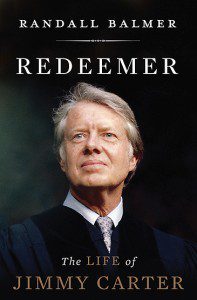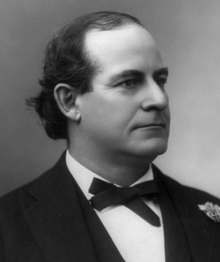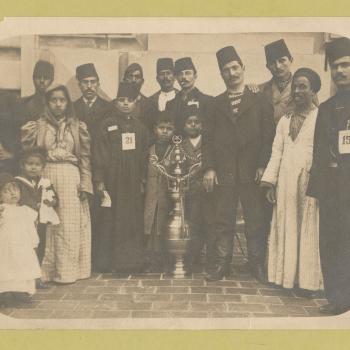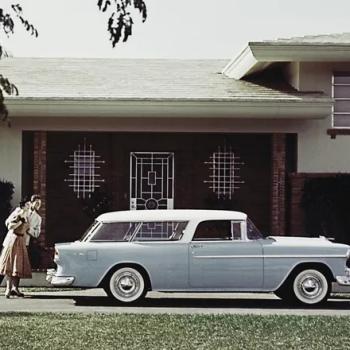When Marge Simpson forgets to pay for a bottle of rum at the Qwik-E-Mart, she ends up serving thirty days in jail for shoplifting. Without Marge’s famous marshmallow squares to sell, Springfield’s Beautify Our Parks Bake Sale falls short of its goal, forcing the town to purchase a statue of Jimmy Carter instead of Abraham Lincoln. Furious, someone in the crowd cries, “He’s history’s greatest monster,” and the townspeople riot, eventually using the statue of Carter as a battering ram (Marge in Chains,” The Simpsons, Seas. 4, Ep. 21., 1993).
Although hyperbolic, The Simpsons’s treatment of the 39th President of the United States captures the general feeling of disdain Americans felt towards Carter in the early 1990s. Public perception of Carter has improved in the interim two decades, in part due to the increasing unpopularity of both George W. Bush and Barack Obama as well as Carter’s post-presidential work with The Carter Center. Rectifying their error in not awarding Carter the prize alongside Begin and Sadat in 1978, the Nobel Peace Prize Committee recognized “his decades of untiring effort to find peaceful solutions to international conflicts, to advance democracy and human rights, and to promote economic and social development” by selecting him for the prize in 2002, further boosting his legacy. Randall Balmer‘s new biography should do likewise.
 Growing up, Jimmy Carter was my favorite president. As an avid reader, I read at least two biographies of him during my third grade year while he was the sitting president. I recall being impressed with his childhood interracial friendships, his appointment to Annapolis, his submarine service, and his assignment to the Navy’s nascent nuclear power program. I distinctly remember casting my vote for him in our elementary school’s mock election (complete with a cardboard refrigerator box voting booth), one of only seven such votes in a school with a population of approximately 250. Besides being impressed with aspects of his biography, I also knew that Carter self-identified as a Christian, something that was important to me, even as a young boy. Coming from Randall Balmer, I expected that Carter’s Christian faith would figure prominently in Redeemer: The Life of Jimmy Carter. I was not disappointed.
Growing up, Jimmy Carter was my favorite president. As an avid reader, I read at least two biographies of him during my third grade year while he was the sitting president. I recall being impressed with his childhood interracial friendships, his appointment to Annapolis, his submarine service, and his assignment to the Navy’s nascent nuclear power program. I distinctly remember casting my vote for him in our elementary school’s mock election (complete with a cardboard refrigerator box voting booth), one of only seven such votes in a school with a population of approximately 250. Besides being impressed with aspects of his biography, I also knew that Carter self-identified as a Christian, something that was important to me, even as a young boy. Coming from Randall Balmer, I expected that Carter’s Christian faith would figure prominently in Redeemer: The Life of Jimmy Carter. I was not disappointed.
During his campaign for president in 1976, Jimmy Carter unashamedly proclaimed himself to be “born again,” a label that perplexed the national media . It does not perplex Balmer. Having grown up in an evangelical environment and received two degrees from evangelical institutions, he understands evangelical sensibilities, even though he has long since left their subculture behind. As a result, unlike other biographies, Redeemer places those aspects of Carter’s life at the center of his life, a well-founded approach considering Carter placed them there himself. In fact, Carter is probably the most Christian president of the twentieth century. For example, in 1968, he went on mission trips to Loch Haven, Pennsylvania and Springfield, Massachusetts, where he engaged door-to-door evangelism. (When I read that, I wondered how many other Christian presidents actively shared their faith, seeking converts.) Further, while in the White House, he and Rosalynn read a chapter in the Bible every night. As president, he faithfully attended First Baptist Church, Washington, teaching Sunday School 3-4 times per year. Prayer too, was a constant in the Carter White House.

As a candidate, Carter famously wore his faith on his sleeve. He told voters that he “spent more time on his knees the four years I was Governor… than I did in all he rest of my life put together (56).” Hyperbole aside, evangelicals could relate to such personal piety. They were further impressed when Carter refused to soft-peddle his religious convictions, declaring “If there are those who do not want to vote for me because I’m a deeply committed Christian, I believe they should vote for someone else (57).” Such statements also characterized Carter’s manner of speaking directly, providing evidence that he embodied the Christian virtues of integrity and honesty. As the taint of the duplicitous Nixon administration hovered over the Ford campaign, many evangelicals found these things attractive, and they cast their ballots for the peanut farmer from Georgia. Carter won the election in 1976; by January 20, 1977, evangelicals had one of their own in the White House.

But Carter’s evangelicalism was different than many expected. Although the family resemblances were clear, it did not easily fit into all the dominant patterns of post-World War II era evangelicalism. Instead, it hearkened back to an earlier era. From the book’s opening pages, Balmer firmly establishes Carter in the “activist strain of evangelicalism known as progressive evangelicalism (xiv),” and connects him to evangelical social reformers of the nineteenth century such as Charles Finney, Frances Willard, and William Jennings Bryan (xv-xvi, 48, 74, 180, 188). To Carter (and to Balmer) the thirty-ninth president’s progressive policies flowed naturally from his own evangelical faith–salted with a dash of Niebuhrian realism–and fitted well into the historical stream of that tradition. For instance, as governor of Georgia, Carter perceived that Jesus’ instructions to visit those in prison (Matthew 25:36) applied to more than just individuals. Instead, it meant that he should use his power as governor to reform the criminal justice system (35). As president, Carter viewed his efforts to pursue peace, agitate for human rights, back the ERA Amendment to the Constitution, and support efforts to eliminate systemic racism as similar logical extensions of biblical prescriptions. By 1979, many evangelical voters saw it differently.
After gaining the support of roughly half of them in the 1976 election, evangelical voters abandoned him at the polls in 1980, contributing to Reagan’s landslide victory in 1980. As might be expected from the author of Thy Kingdom Come: How the Religious Right Distorts Faith and Threatens America, that subtext figures prominently into Balmer’s biography of Carter, something I will address in more detail in tomorrow’s post.
Regardless of one’s own political position or assessment of the Carter presidency, Redeemer is worth reading for several reasons. First, Balmer is an excellent storyteller. Throughout most of its pages, Redeemer reads like one of David Halberstam’s books, moving along at a steady pace, rarely bogging down. Second, few presidential biographies orient their story around a president’s religious beliefs. This one does. Such novelty makes it even more interesting. Third, the cries of the people of Springfield are certainly inaccurate. There is much to be impressed with in the life of Jimmy Carter. His work ethic, his compassion for the less fortunate, his integrity, and his commitment to his faith inspired me–at times, they convicted me.
NOTE: The second part of this review will appear tomorrow, July 3, 2014.

















